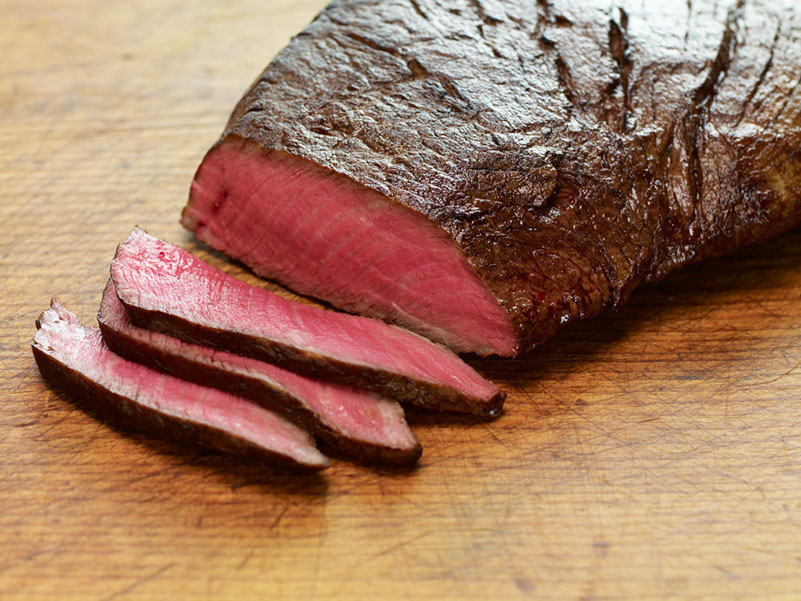Cut slices from the same steak but in two different directions, and you would never believe they came from the same steak at all. One will be tender, soft, and easy on the bite. The other will be chewier and, generally, a less than optimum eating experience by comparison. Even the very best USDA Prime, dry-aged beef available, such as that from Lobel’s of New York, benefits from your knowing how to cut a steak to maximize its tenderness. In turn, your impressions of flavor and juiciness are enhanced when all three elements are in balance.
Cutting across the grain of muscle fibers within the beef is the simple technique that ensures every bite is as tender as the next.

Long Fibers or Short Bundles
One way to understand just why this is so, is to take a close look at how a muscle is laid out. A muscle is similar to an electrical cord in that it is composed of long, individual wires that run in parallel. A muscle with fibers running in parallel is called a striated muscle. The striations within a beef muscle are the telltale signs of which direction its grain, or graining, is running.
If you cut in the same direction the striations run, you would be cutting pieces into long sections of a few fibers. Breaking the fibers down through chewing is a tougher task. The long fibers put up resistance to being pulverized between your teeth.
To make things easier, cut across the grain—that is, cut perpendicular to the direction of the grain. This technique, by contrast, cuts the muscle fibers into short bundles of many fibers that are then easily broken down by gentle chewing.
In some cases, such as with flank, skirt, or hanger steak, the muscle fibers are thick and manifest the grain much more clearly. In cuts such as filet or strip (shell), the grain is much finer and may be a bit harder to identify.
So if you are ever in doubt about which way the grain is running, press gently on the meat to see how it begins to separate. The direction of the grain will become clear.
Which Way is Which?
There are a couple of tricky cuts that take a special touch.
Skirt steak has a grain that runs perpendicular to its length. In this case, cut the skirt lengthwise into section 4-5 inches long. Then you will be able to cut each section against the grain into slices 1/3 to 1/2 inch thick.
With a whole brisket, you have two different pieces of meat with the grains running in different directions. A packer’s cut brisket, which competitive BBQ teams prefer, is essentially untrimmed. It consists of 4 layers (from the top down): the fat cap; a layer of beef, called the point; another layer of fat; then a large layer of beef, called the flat.
The grain of the point, or second cut, runs almost perpendicular to the grain of the flat, or first cut. So, after your brisket is finished cooking, place it on a cutting surface and remove the fat cap. Then, separate the point from the middle layer of fat, which gets removed next. Now you have the point and the flat in separate pieces which makes cutting against the grain of each much easier to do.



Leave Your Response